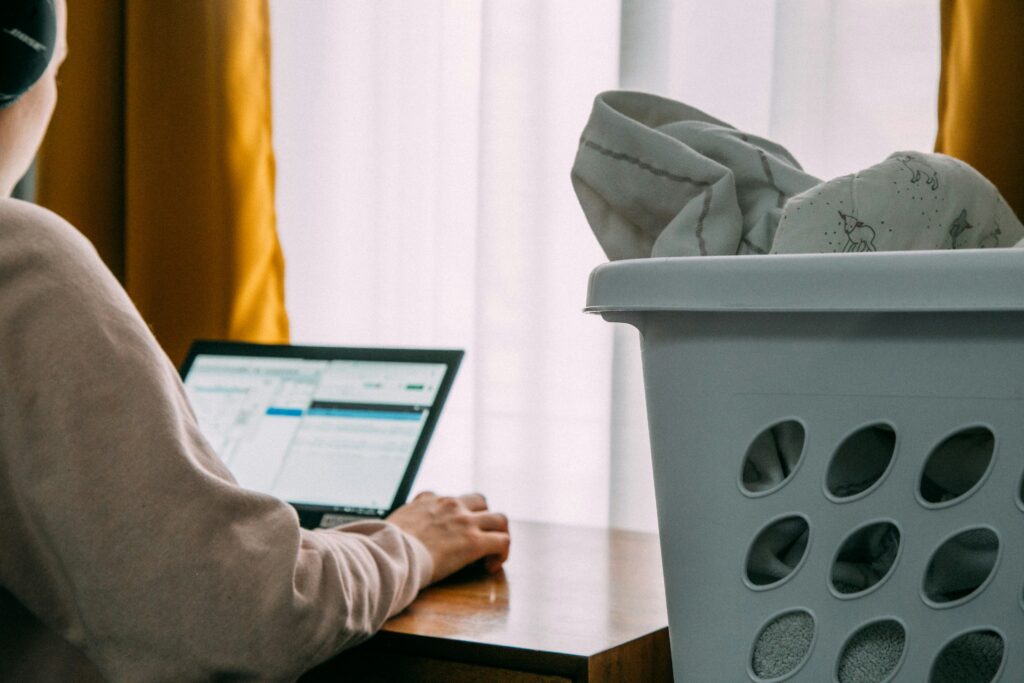
Are you tired of your white shirts turning pink or finding your favorite clothes ruined after washing? You’re not alone! Here in Awka, where red dust gets everywhere, knowing the Best Practices for Sorting Laundry isn’t just about arranging your clothes but protecting them.
Let’s be honest, sorting laundry isn’t anyone’s favourite task, but it’s one of those simple things that saves time, money, and lots of frustration. With our dusty Nigerian weather, proper sorting keeps your clothes looking fresh and lasting longer.
Don’t worry if you’ve made mistakes before, everyone has. I’ll show you easy ways to sort your laundry that even a child can follow. Are you ready to keep your clothes looking new? Let’s get started!
Why Should You Sort Your Laundry?
Have you ever wondered why your mum was so insistent on separating clothes before washing? Turns out, she was onto something right? Well, properly sorting your clothes before washing isn’t just some outdated ritual, it’s very important before doing the laundry.
Think about it, would you cook beans and cake together? Of course not! Your clothes need different care too. Here’s why sorting laundry matters:
- It stops colors from bleeding onto other clothes
- It protects soft, delicate fabrics or clothes
- It makes your clothes last longer
- It helps your clothes get cleaner
- It stops heavy clothes from damaging lighter ones
Best Practices for Sorting Laundry
Are you ready to learn how to sort laundry like a pro? Here’s how to get it done:

1. Sort by Colour
This is the sorting method everyone knows, but let’s break it down properly:
- Whites: These include white clothes like t-shirts, socks, underwear, and bed sheets. Keep these separate to maintain their brightness and prevent them from taking on colours from other clothes that bleed. Even White clothes with small coloured patterns should go here, but be careful with brand new coloured patterns that might bleed.
- Darks/Blacks: Your black, navy, dark gray, and deep purple clothes fall into this category. These colors can bleed, especially when new, and can also attract lint from lighter-colored clothes.
- Lights: This includes pastels, light grays, and beiges. These items can pick up dye from darker clothes but aren’t as sensitive as pure whites.
- Brights/Colours: Your reds, yellows, oranges, and bright blue coloured clothes should have their own category, especially when they’re new and most likely to release dye.
Last month, I washed a new red shirt with some light-colored clothes, and let’s just say my daughter’s school uniform now has an additional colour on it! Don’t make my mistake, make sure to sort your clothes before laundry
2. Sort by Fabric Type
Colours aren’t the only way to sort laundry. One of the best practices for sorting laundry is by the fabric type:
- Heavy Fabrics like Jeans, heavy cotton, towels, and beddings are heavy and strong which can handle more aggressive washing. They also take longer to dry.
- Delicate silks, lace, lingerie, and anything with embellishments needs gentle care. Washing these with heavy items is asking for damage, so ensure to separate and wash them differently.
- Synthetic Fabrics: These man-made materials (polyester, sports clothes) need cool water washing and air-drying to prevent smells and static. Avoid hot dryers which can damage them.
- Cottons and Linens:These natural fabrics should be washed separately from rough materials to prevent pilling and maintain their softness. Most everyday t-shirts and casual clothes fall into this category.
3. Sort by How Dirty Clothes Are
This is where many people miss out, sorting by how dirty items is one of the best practices for sorting laundry like a pro:
- Very Dirty Work clothes, sports gear, children’s play clothes, and stained items need stronger washing. So, separate them accordingly.
- Your everyday clothes that aren’t visibly dirty should be sorted together.
- Lightly Worn Clothes you only wore for a short time and didn’t sweat in should be kept seperately.
Would you want your clean office shirt washed with your child’s muddy football uniform? I didn’t think so!
Making Sorting Laundry Easy
Now that you understand the categories, let’s set up a system that doesn’t take over your entire house. Having a sorting system is definitely worth it, consider:
- Get different baskets or buckets for each category of the sorting.
- Label them clearly (whites, colors, delicates)
- Put them where everyone can use them
In my home, I’ve placed three rubber baskets in our bathroom and taught everyone in the family which cloth goes in each basket. The Basket has one for whites, one for colours, and one for delicates. Even my small children know which is which.
What To Do Before Sorting Laundry
Develop these habits to make laundry day much easier:
- Check pockets before adding clothes to the basket or washing( I found ₦5000 in my jean pocket last week. I consider it a reward for good laundry habits)
- Turn dark clothing inside out to prevent fading
- Wash obvious stains right when they happen
- Zip zippers and unbutton buttons to prevent snagging
- Remove belts and empty pockets to protect both the items and your washing machine
These quick steps take seconds but save so much trouble later.
Common Sorting Mistakes to Avoid
Even laundry experts make these mistakes sometimes:
- Putting Too Much in One Category. If you have many white things, separate towels from shirts for better cleaning.
- Not Reading the Labels. Those small tags on clothes have important information that may help your laundry. Check them before washing new items.
- Don’t wash towels with black pants or trousers unless you want your trousers covered in little white bits from the towers.
- Mixing Beddings Wrongly. Wash sheets and pillowcases together, separate from other clothes, for the best results.
- Being Inconsistent. The best system is one you’ll actually use! Create a simple sorting habit and stick to it.
Sorting for Special Washing Situations
- Hand Washing: Items that need hand washing should be sorted into their own category immediately. I keep a small bag hanging in my closet specifically for these delicate items.
- Dry Clean Only: Create a designated spot for dry-clean items to prevent accidentally throwing them in the wash. A hook on the back of your closet door works perfectly.
- Stained Items: For clothes with stains, consider sorting them separately so you can wash off the stains from them all at once before washing.
The Long-Term Benefits of Properly Sorting Laundry
Taking a few minutes to sort your laundry properly pays off:
- Your clothes last longer, saving you money
- Colours stay bright, keeping you looking good
- Everything gets cleaner
- You spend less time fixing laundry mistakes
- You waste less water and electricity by washing properly
Just think about it, is spending an extra three minutes sorting worth saving your favourite shirt? I think we both know the answer!
Final Words
Remember, the goal is protecting your clothes while making your laundry day easier and fun to do. Setting up a simple sorting system is better than having none at all.
Do you need help setting up a laundry system that works for your home? At Bukz Easy Clean, we’re always here to help with advice or our professional cleaning services. Just send us a message, and we’ll get you sorted out!

